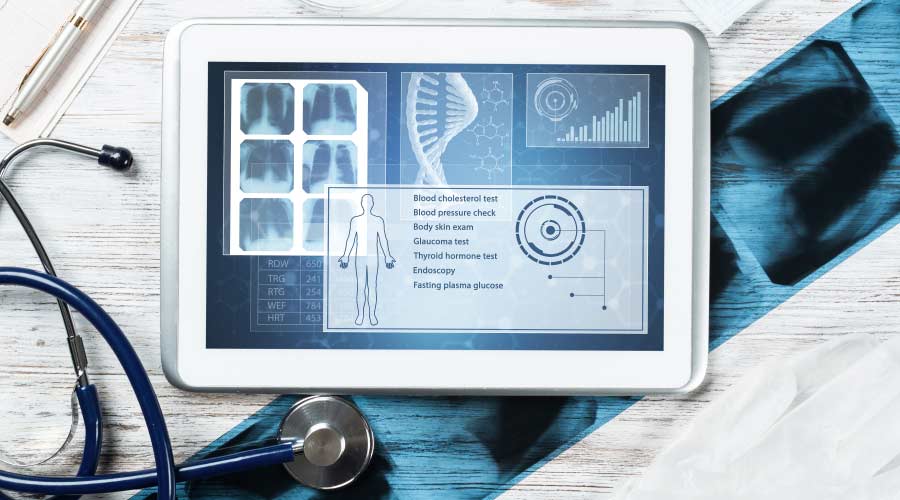Technological systems are like other machinery found in healthcare facilities and needs routine maintenance. Just like traditional machinery, things can go awry if not properly managed. Hospitals and other healthcare facilities can risk their patients’ private information being stolen by hackers if software solutions aren’t up to date. In this manufacturers roundtable, Healthcare Facilities Today talks with top technology professionals on the reasons routine software maintenance is essential.
Why is it important to perform routine maintenance to software and technology? What do hospitals and other healthcare facilities risk if regular maintenance isn’t operated.
“Regular monitoring and maintenance of any system is critical. Being proactive with a defined program allows for fixable problems ahead of time, rather than a potentially larger challenge that may take place once the issue occurs. A good software and hardware maintenance plan can ensure that the software is updated with the latest version and that the hardware is in good working condition. Failure to upgrade these systems can leave openings in the security layer that make it easier for hackers to find vulnerabilities.”
— Paul Cannon, healthcare industry leader, SALTO Systems
“Upkeep of technology implementations is of course critical, just as you would ensure the HVAC system in a building is continuing to function as usage changes or advancements are made. But the act of maintenance, especially for long-term care operators, is daunting. This is why an enterprise system is especially important. Operational staff cannot afford the time and resources to maintain systems and devices – the point at which technology creates work instead of augmenting it is when it is no longer valuable.”
— Scott Moody, CEO, K4Connect
“Routine maintenance, including system upgrades, helps an organization reduce the accumulation of technical debt. Technical debt is often amassed when organizations forgo routine maintenance and upgrades and instead opt to implement a new system or feature. Technical debt works similarly to credit card debt. The more you purchase on credit, the more debt you have, leaving the purchaser with less financial flexibility. Organizations that add on to their portfolio for the near-term gains will eventually experience headaches. By choosing new features over maintenance, they are raising their technical debt. Not only does each system have a fixed cost, but there are the hidden, very real, costs of running multiple systems, including the need for additional staff. As technical debt increases, an organization’s agility and flexibility decrease. An organization can reduce potential pitfalls of technical debt by taking an intentional approach to the ongoing management and maintenance of systems, including regular maintenance plans and by reserving development capacity to focus on the reduction of accumulated debt. Think of it similarly to putting savings into the rainy day fund.”
— Jimmy Hurff, senior vice president, data and analytics, GHX
"Preventive maintenance is key to ensuring proper asset operation and reducing the risk of failure impact on visitors and staff. Imagine a new car that never receives an oil-change. This car will leave the owner stranded on the side of the road after a very short life. The same applies to building assets, both clinical and infrastructure-based. Without proper maintenance, equipment is guaranteed to fail. Almost all equipment has a technology component that requires routine maintenance to keep it operational, or at a minimum, provides information that can lead to the controlled remediation of an issue, minimizing patient impact and risk."
— Brian Crum, strategic solution consultant, Brightly
"Like any physical infrastructure asset, technology assets similarly require maintenance and upgrades. This is particularly true in areas where systems were not typically exposed to outside threats. Take, for example, an infusion pump or any piece of clinical or utility equipment that is utilizing some form of PC-based processing capability to function. Just a few years ago, that equipment might function off the grid, but now, as the internet of things surges forward, all of this equipment is exposed to the world. Cyber-attacks on clinical equipment and infrastructure are now possible. The only way to combat that is to make sure that all elements of the technology platforms are hardened against these threats."
- Mark Mochel, strategic account executive, Brightly
Mackenna Moralez is assistant editor with Healthcare Facilities Today.

 Healthcare Is the New Retail
Healthcare Is the New Retail Bridgeway Behavioral Health Services Launches Campaign to Renovate Health Center
Bridgeway Behavioral Health Services Launches Campaign to Renovate Health Center Ground Broken for New North Dakota State Hospital
Ground Broken for New North Dakota State Hospital AI Usage for Healthcare Facilities
AI Usage for Healthcare Facilities Ground Broken on Pelican Valley Senior Living Modernization Project
Ground Broken on Pelican Valley Senior Living Modernization Project